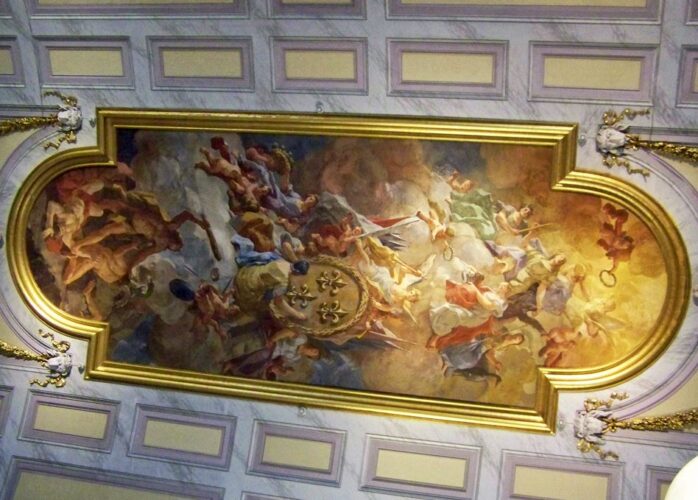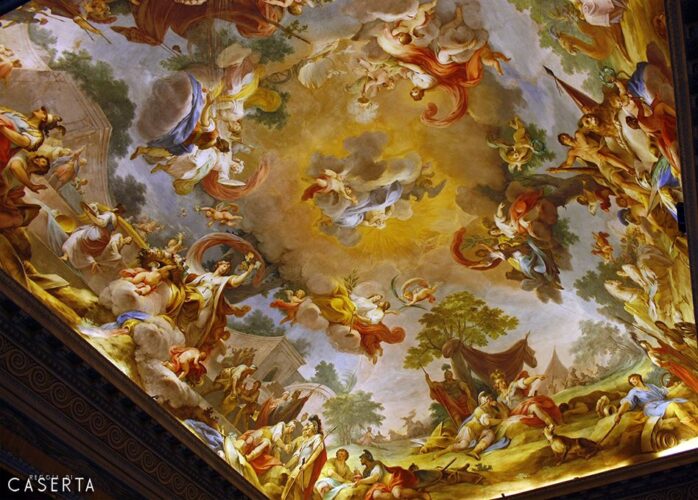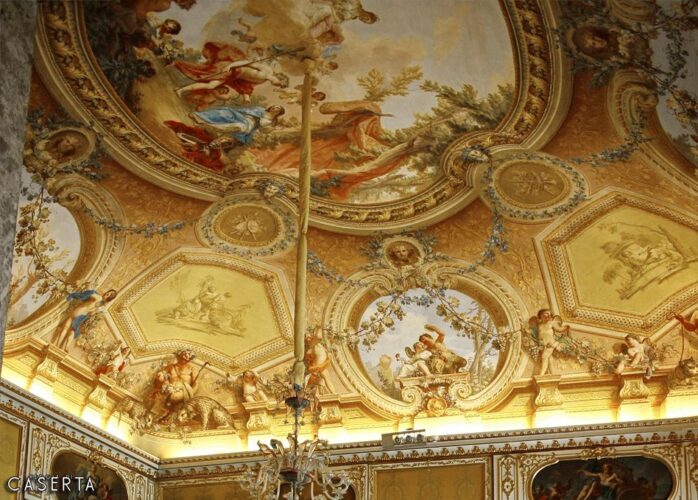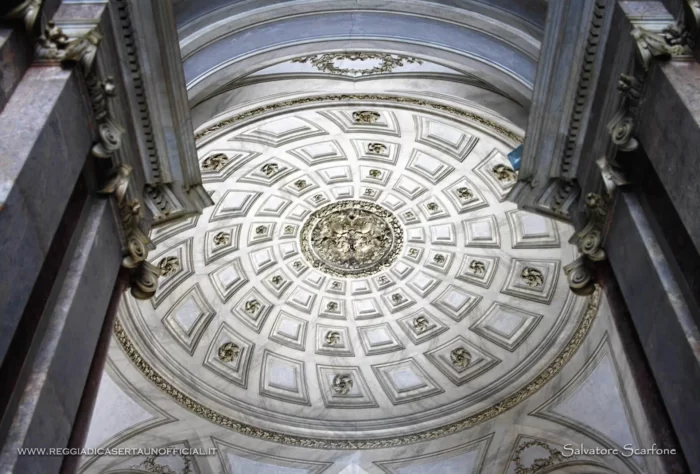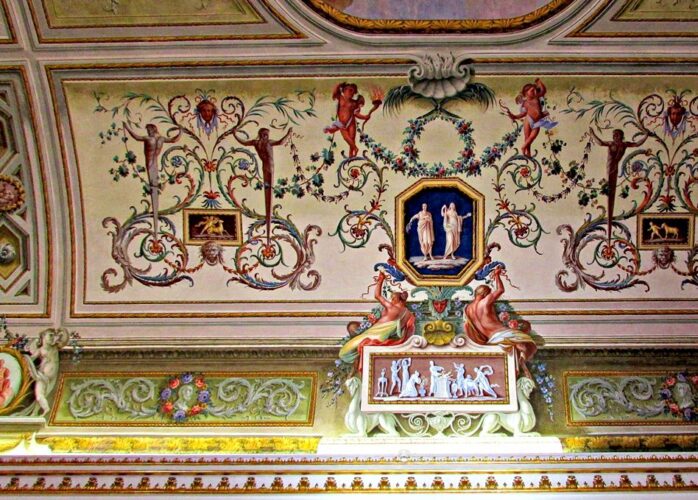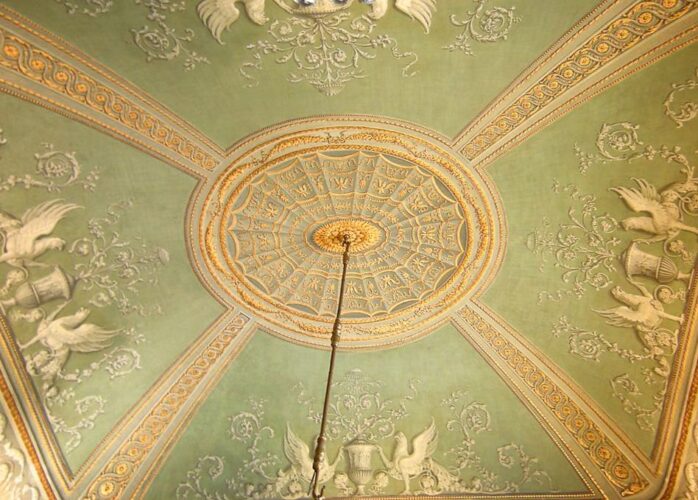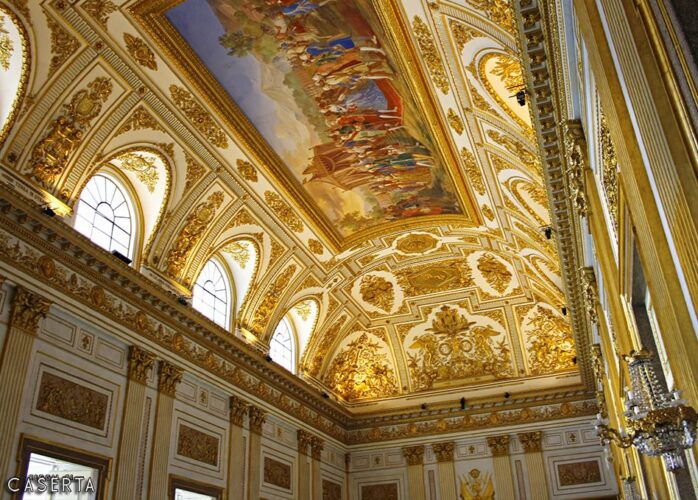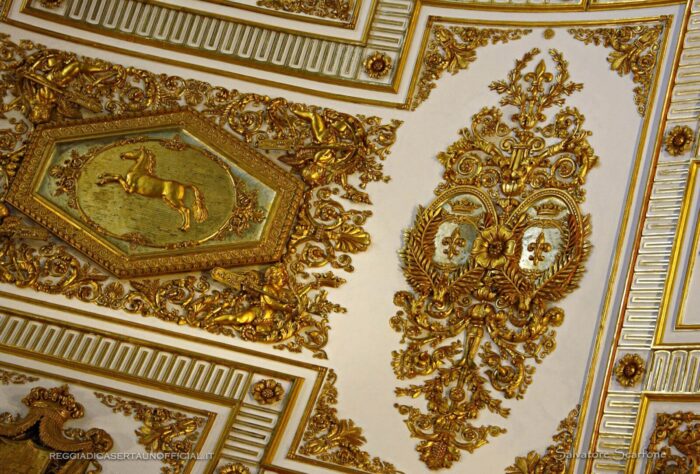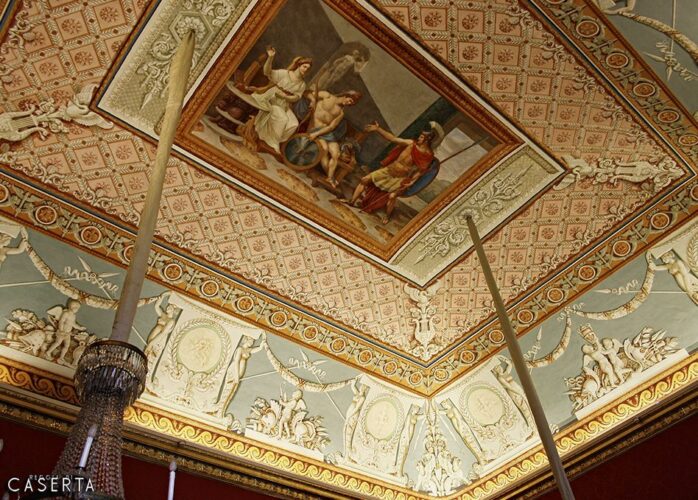The ceiling: a comparison of styles
Learn to compare different ceiling styles, from Baroque to Late Neoclassical
Baroque
ROCOCÒ (LATE BAROQUE) – 1700-1750
The ceiling is a hybrid of three styles: the symmetry and theatricality of the Baroque are still respected, but some decorative details, such as small scenes and decoration with C and S scrolls are typical of the Rococo style. The straight decorative fascia with repeated motif are typically Neoclassical.
NEOCLASSICAL – 1750-1800
EMPIRE (LATE NEOCLASSICAL) – 1800-1840
The linearity of the structure and the bas-relief decoration, the painting with Roman figures are still typically neoclassical, but the gilded decorations resembling gilded bronzes as like as happens with Empire style furniture, denoting a transitional style between the neoclassic style and late neoclassical of the Napoleonic era, the Empire style.The high presence of military decorations, and the fascia with griffins confirms the style.
Link esterni
